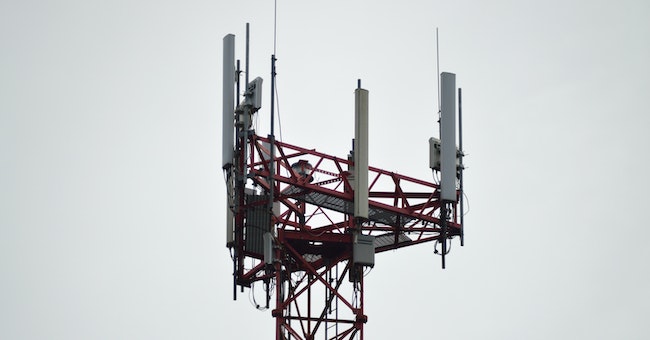Comparative Analysis: Edge Computing vs Cloud Computing

Introduction
Computing technologies have become increasingly important in today's digital age. They have revolutionized the way businesses operate, communicate, and store data. With the exponential growth of data and the need for real-time processing, two prominent paradigms have emerged: edge computing and cloud computing.
Edge computing and cloud computing, two distinct computing paradigms, serve different purposes in the world of technology. Edge computing refers to the practice of processing and analyzing data closer to the source, at the edge of the network, rather than relying solely on centralized cloud servers. On the other hand, cloud computing involves storing and accessing data and applications over the internet, using remote servers managed by service providers. In today's article, we will try to unravel the intricacies of the definitions and applications of these two emerging technologies, hoping that you can obtain proper know-how and clearer expectations for the growth of yourself and of your organization.
Understanding Edge Computing
Definition and Core Concepts
Edge computing is a distributed computing paradigm that brings computational power and data storage closer to edge devices or endpoints, such as sensors, IoT devices, and smartphones. It aims to minimize the latency, bandwidth usage, and dependency on centralized cloud infrastructure by enabling data processing and analysis at or near the source of data generation.
The key concepts of edge computing include:
Proximity to Data Source: In edge computing, data processing and storage occur in close proximity to where the data is generated or consumed. By reducing the distance between the data source and the computing resources, edge computing enables faster response times and real-time decision-making.
Decentralized Architecture: Edge computing employs a decentralized architecture where computational tasks are distributed across multiple edge devices and gateways. This approach enables local data processing, reducing the need for continuous communication with a central cloud server.
Real-time and Low Latency: Edge computing focuses on processing data and executing computations in real-time with minimal latency. By minimizing the round-trip time to a remote cloud server, edge computing enables time-sensitive applications, such as autonomous vehicles, industrial automation, and real-time analytics.
Data Filtering and Aggregation: Edge devices are often equipped with the capability to filter, aggregate, and preprocess data locally before sending it to the cloud or a centralized server. This filtering process reduces the amount of raw data transmitted, optimizing bandwidth usage and reducing the associated costs.
Edge Intelligence: Edge computing incorporates intelligent algorithms and machine learning capabilities at the edge devices. This enables local decision-making, allowing edge devices to perform analytics, pattern recognition, and inference without relying on a central cloud server. Edge intelligence enhances efficiency, privacy, and security by reducing the need to transmit sensitive data to the cloud.
Hybrid Edge-Cloud Architecture: Edge computing is often combined with cloud computing in a hybrid architecture. This approach leverages the benefits of both paradigms by utilizing edge computing for local processing and cloud computing for tasks that require extensive storage, complex analytics, or collaboration.
Edge Management: Managing a distributed edge infrastructure involves overseeing a large number of edge devices, gateways, and their connectivity. Edge management solutions provide centralized control, monitoring, and security mechanisms to ensure the smooth operation of edge computing deployments.
Edge Computing Architecture
Edge computing architecture refers to the structure and components involved in the implementation of edge computing solutions. It encompasses the arrangement of edge devices, gateways, communication networks, and management systems that enable efficient data processing, storage, and analysis at the edge of the network. The architecture is designed to support the core principles of edge computing, such as proximity to data source, low latency, real-time processing, and distributed intelligence.
The architecture of edge computing typically involves the following components:
Edge Devices: These are the endpoints or edge nodes where data is generated or consumed. Edge devices can include sensors, actuators, cameras, industrial machinery, smartphones, and IoT devices. These devices are responsible for capturing, collecting, and transmitting data to the edge computing infrastructure.
Edge Gateways: Edge gateways act as intermediaries between the edge devices and the edge computing infrastructure. They facilitate connectivity, protocol translation, and data aggregation from multiple edge devices. Edge gateways often have computational capabilities to perform local data preprocessing, filtering, and analysis before forwarding the data to the next stage of the architecture.
Edge Computing Nodes: These are the computing resources located at the edge of the network. Edge computing nodes can range from small microcontrollers and single-board computers to powerful servers and clusters. They are responsible for executing local computations, running edge applications, and storing data locally. Edge computing nodes enable real-time processing and decision-making at the edge, reducing the reliance on centralized cloud infrastructure.
Communication Networks: Edge computing architecture relies on various communication networks to enable data exchange between edge devices, gateways, and edge computing nodes. These networks can include wired connections such as Ethernet or fiber optics, wireless technologies like Wi-Fi, Bluetooth, Zigbee, or cellular networks such as 4G/5G. The choice of network depends on factors like data bandwidth requirements, range, latency, and deployment environment.
Cloud Infrastructure: While the focus of edge computing is on processing data at the edge, it often integrates with cloud infrastructure in a hybrid model. Cloud resources are used for tasks that require extensive storage, complex analytics, or collaboration across multiple edge devices. The cloud infrastructure provides centralized management, data synchronization, and scalability to support edge deployments.
Edge Management System: An edge management system oversees and coordinates the various components of the edge computing architecture. It provides tools for provisioning, monitoring, and managing the edge devices, gateways, and computing nodes. The management system ensures the reliability, security, and efficient operation of the edge computing infrastructure. It may also include features like firmware updates, security patches, and edge application deployment.
Real-World Applications/Examples of Edge Computing
IoT Edge Computing: IoT edge computing combines IoT devices with edge computing capabilities, offering benefits like reduced latency, improved reliability, enhanced security, and efficient bandwidth use. Real-world applications include smart manufacturing for real-time optimization, smart cities for monitoring traffic and improving urban life, connected vehicles for driver assistance and safety, healthcare for remote patient monitoring and personalized treatments, retail for inventory tracking and customer engagement, and energy management for efficient energy usage. These applications leverage localized data processing, real-time insights, and decision-making procedures, thus transforming industries and enabling innovative services.
Video Surveillance: Edge computing is widely used in video surveillance systems. By deploying edge devices such as cameras with built-in processing capabilities, video footage can be analyzed and processed at the edge in real-time. This enables features like object detection, facial recognition, and behavioral analysis, enhancing the effectiveness of security systems. Edge computing reduces the need for transmitting large amounts of video data to a central server, saving bandwidth and enabling faster response times.
Autonomous Vehicles: Edge computing also plays a crucial role in the development of autonomous vehicles. By equipping vehicles with powerful onboard computing systems, data from sensors such as lidar, radar, and cameras can be processed locally. This enables real-time perception, decision-making, and control, reducing the reliance on cloud connectivity and minimizing latency. Edge computing in autonomous vehicles enhances safety, enables faster response times, and supports real-time navigation and object detection.
Telecommunications: Edge computing is increasingly being adopted in the telecommunications industry. By deploying edge servers at the network edge, closer to end-users, latency-sensitive applications such as video streaming, online gaming, and virtual reality can be enhanced. Edge computing reduces the distance between the user and the content, improving user experience, reducing network congestion, and enabling faster content delivery.
Retail Analytics: Edge computing is used in retail analytics to gather and process data in real-time. By deploying edge devices such as sensors and cameras in stores, data on customer behavior, foot traffic, and product interactions can be collected and analyzed locally. This enables real-time insights for personalized marketing, dynamic pricing, and efficient store operations. Edge computing in retail analytics helps retailers optimize customer experiences, increase sales, and improve overall operational efficiency.
Asset Tracking and Management: Lastly, edge computing is employed in asset tracking and management systems. By equipping assets, such as shipping containers, vehicles, or equipment, with IoT devices that have edge capabilities, real-time data on location, condition, and performance can be collected and analyzed locally. This enables efficient tracking, predictive maintenance, and inventory management. Edge computing in asset tracking and management improves operational efficiency, reduces downtime, and enhances supply chain visibility.
Understanding Cloud Computing
Definition and Core Concepts
Cloud computing is a concept used to describe the provision of computing services via the internet. These services encompass a wide range of components, such as storage, servers, databases, networking, and software. The key advantage of cloud computing is that it enables users to access these resources whenever they need them, without having to invest in costly infrastructure.
In traditional computing models, organizations would typically have to purchase and maintain their own physical servers, storage devices, and networking equipment. This required a significant upfront investment and ongoing maintenance costs. However, with cloud computing, these resources are provided by third-party service providers and accessed over the internet.
The core concepts of cloud computing revolve around the delivery of computing services over the internet and the flexibility it provides to users. These concepts include:
On-Demand Self-Service: Cloud computing allows users to access and provision computing resources, such as storage, servers, and software, as needed without requiring any human interaction with the service provider. This self-service capability empowers users to quickly and easily obtain the resources they require, reducing the need for manual intervention and streamlining the process.
Broad Network Access: Cloud services are accessible over the internet from a variety of devices, including laptops, tablets, and smartphones. This broad network access enables users to access their resources from anywhere, at any time, as long as they have an internet connection. It promotes mobility, remote work, and collaboration, allowing users to work seamlessly across different locations and devices.
Resource Pooling: Cloud computing providers aggregate and share computing resources among multiple users, creating a shared pool of resources. This pooling allows for efficient utilization of resources, as they can be dynamically allocated and reallocated based on demand. Users benefit from economies of scale, as they can access high-performance resources without having to invest in dedicated infrastructure.
Rapid Elasticity: Cloud computing enables users to quickly scale their resource usage up or down based on their needs. This elasticity allows for the seamless adjustment of resources to accommodate fluctuating workloads. For example, during peak periods, additional resources can be provisioned to handle increased demand, and then scaled back during periods of low demand. This flexibility ensures optimal resource utilization and cost-effectiveness.
Measured Service: Cloud computing providers monitor and measure resource usage, allowing users to be billed for the actual resources they consume. This pay-as-you-go model provides transparency and cost control, as users only pay for what they use. It eliminates the need for upfront capital investments and allows for accurate budgeting and forecasting.
Benefits of Cloud Computing
Cost Savings: Cloud computing eliminates the need for upfront capital investments in hardware, software, and infrastructure. Instead, users can pay for cloud services on a subscription or pay-as-you-go basis, reducing the financial burden of maintaining and upgrading IT infrastructure.
Scalability and Flexibility: Cloud computing provides the ability to quickly and easily scale resources up or down based on workload demands. This scalability allows organizations to handle peak periods without investing in additional infrastructure that may be underutilized during off-peak times.
Accessibility and Mobility: Cloud services are accessible over the internet from anywhere, at any time, and from a variety of devices. This accessibility promotes remote work, collaboration, and mobility, allowing users to access their resources and work on projects from different locations and devices.
Disaster Recovery and Business Continuity: Cloud computing providers typically have robust backup and disaster recovery mechanisms in place. Data is stored in multiple locations, ensuring redundancy and minimizing the risk of data loss. In the event of a disaster or system failure, organizations can quickly recover their data and resume operations, minimizing downtime and ensuring business continuity.
Security and Data Protection: Cloud computing providers invest heavily in security measures to protect user data. They employ advanced security technologies, such as encryption, firewalls, and access controls, to safeguard data from unauthorized access, breaches, and cyber threats.
Collaboration and Efficiency: Cloud computing facilitates collaboration among team members by providing a centralized platform for sharing and accessing documents, files, and resources. It enables real-time collaboration, version control, and simultaneous editing, enhancing productivity and efficiency.
Automatic Software Updates: Cloud computing providers handle software updates and maintenance, ensuring that users have access to the latest features and security patches without the need for manual intervention. This eliminates the burden of managing software updates and allows users to focus on their core business activities.
Jobs in Cloud Computing
Jobs in cloud computing have seen a significant rise in demand in recent years, as organizations increasingly adopt cloud technologies to streamline their operations and improve efficiency. Here are some key points to consider when discussing jobs in cloud computing:
Cloud Architect: A cloud architect is responsible for designing and implementing cloud infrastructure solutions. They work closely with stakeholders to understand business requirements and develop cloud strategies that align with organizational goals. Cloud architects design and deploy cloud environments, ensuring scalability, security, and cost-effectiveness. They also provide guidance on cloud best practices and help organizations migrate their applications and data to the cloud.
Cloud Engineer: Cloud engineers are responsible for implementing and managing cloud infrastructure and services. They configure and deploy cloud resources, monitor performance, and troubleshoot issues. Cloud engineers work with various cloud platforms, such as Amazon Web Services (AWS), Microsoft Azure, and Google Cloud, to build and maintain scalable and reliable cloud environments.
Cloud Security Specialist: With the increasing adoption of cloud technologies, ensuring the security of cloud environments has become crucial. Cloud security specialists are responsible for implementing and maintaining security measures to protect cloud infrastructure and data. They assess and mitigate security risks, monitor potential threats, and implement security controls, such as encryption, access controls, and intrusion detection systems.
Cloud Developer: Cloud developers specialize in developing and deploying applications on cloud platforms. They leverage cloud services and APIs to build scalable and resilient applications that can take advantage of the cloud's flexibility and scalability. Cloud developers work with programming languages and frameworks, such as Java, Python, and .NET, to develop cloud-native applications.
Cloud Operations Engineer: Cloud operations engineers are responsible for managing and optimizing cloud infrastructure and services. They monitor performance, troubleshoot issues, and ensure the availability and reliability of cloud resources.
Cloud Consultant: Cloud consultants provide expertise and guidance to organizations on cloud adoption and strategy. They assess business requirements, evaluate cloud solutions, and develop migration plans. Cloud consultants help organizations choose the right cloud platforms and services, considering factors such as scalability, security, and cost.
Cloud Sales and Marketing: As cloud computing continues to gain traction, there is a growing demand for professionals who can effectively market and sell cloud services. Cloud sales and marketing professionals understand the benefits and value propositions of cloud technologies and communicate them to potential customers.
Comparative Analysis: Edge Computing vs Cloud Computing
Performance and Functionalities
Edge Computing: This approach offers several advantages, including reduced latency, improved real-time processing, and enhanced reliability. By processing data locally, edge computing enables faster response times, making it ideal for applications that require immediate decision-making or low-latency interactions. Use cases such as autonomous vehicles, industrial automation, and IoT devices greatly benefit from edge computing's ability to process data in real-time.
Cloud Computing: Cloud computing, on the other hand, involves the delivery of computing resources, including storage, processing power, and applications, over the internet. It provides scalability, flexibility, and accessibility to users, allowing them to access resources on-demand. Cloud computing offers a wide range of services, including Infrastructure as a Service (IaaS), Platform as a Service (PaaS), and Software as a Service (SaaS). It is particularly advantageous for applications that require extensive computational power, large-scale data storage, and collaborative work environments.
When evaluating performance and capabilities, edge computing outshines in situations that demand minimal latency and immediate processing. It guarantees swift response times and reduces dependence on a centralized infrastructure. Conversely, cloud computing provides scalability, adaptability, and an extensive array of services, rendering it suitable for applications that necessitate abundant computational resources and collaborative work settings.
Security and Privacy Implications
Edge Computing: Edge computing introduces unique security and privacy considerations. Since data is processed closer to the source, it reduces the risk of data breaches during transmission to a centralized cloud. However, it also means that security measures must be implemented at the edge devices themselves. Additionally, edge computing may involve processing sensitive data locally, raising concerns about data privacy and compliance with regulations. Organizations adopting edge computing must carefully consider security measures and ensure compliance with relevant privacy regulations.
Cloud Computing: Cloud computing presents its own set of security and privacy implications. Storing data in a centralized cloud infrastructure requires robust security measures to protect against unauthorized access and data breaches. Cloud service providers invest heavily in security measures, including encryption, access controls, and regular security audits. However, concerns about data privacy and compliance with regulations may arise, particularly when data is stored in a third-party cloud environment.
On the level of security and privacy implications, edge computing presents benefits by mitigating risks associated with data transmission and granting local oversight of sensitive data. Nevertheless, organizations must ensure the implementation of adequate security measures on edge devices. On the contrary, cloud computing relies on the security measures offered by established cloud service providers; however, it may raise apprehensions regarding data privacy and compliance.
Cost and Infrastructure Requirements
Edge Computing: Edge computing can offer cost savings by reducing the need for extensive data transmission and storage in the cloud. It minimizes bandwidth requirements and lowers operational costs associated with transmitting data to a centralized location. However, implementing edge computing requires infrastructure investments, including edge devices, networking equipment, and maintenance costs. Organizations must carefully evaluate the cost-effectiveness of edge computing based on their specific use cases and requirements.
Cloud Computing: Cloud computing offers cost advantages through its pay-as-you-go model, allowing organizations to scale resources based on demand. It eliminates the need for upfront infrastructure investments and reduces maintenance costs. However, organizations must consider the long-term costs associated with cloud services, including data storage, network bandwidth, and subscription fees. Additionally, depending on the scale of operations, cloud computing costs can increase significantly over time.
In terms of cost and infrastructure requirements, edge computing can provide cost savings by reducing data transmission and storage costs. However, it requires upfront investments in edge devices and networking infrastructure. Cloud computing eliminates upfront infrastructure costs but may result in higher long-term costs, especially for extensive data storage and bandwidth requirements. Organizations should carefully assess their specific needs and evaluate the cost-effectiveness of each technology.
Resources to Learn Edge Computing and Cloud Computing
Resources and Programs for Learning Edge Computing
To gain a deeper understanding of edge computing, it is recommended to consider attending workshops and training programs offered by industry experts. These resources can provide you with hands-on experience, practical knowledge, and insights into the latest trends and advancements in edge computing.
Attending workshops and training programs empowers you to learn from professionals who have expertise in the field of edge computing. They can provide you with valuable insights, real-world examples, and practical tips that can enhance your understanding of this technology.
Moreover, these programs often offer hands-on experience, allowing you to work with edge computing tools and technologies in a controlled environment. This practical experience can help you develop the necessary skills and confidence to apply edge computing concepts in real-world scenarios.
Last but not least, workshops and training programs are a great way to stay updated with the latest trends and advancements in edge computing. Industry experts often share their knowledge about emerging technologies, best practices, and case studies, enabling you to stay ahead of the curve and make informed decisions.
Resources and Programs for Learning Cloud Computing
To succeed in the field of Cloud Computing, the key skill you need is an understanding of various 3D printing and modeling software. Fortunately, there are numerous resources available to help you develop this knowledge, available on AZClass, which offers a wide selection of courses designed to help you master these tools and start bringing your ideas to life.
Check out our Cloud Computing Online Courses Catalog, where we have gathered useful courses for you to embark on the journey of brainstorming. In particular, here we have a couple of courses that definitely deserve your attention.
Free Cloud Computing Tutorial - A Practical Introduction to Cloud Computing
This tutorial covers the fundamentals of Cloud Computing and its various deployment models. Learners will gain an understanding of what Cloud Computing is and isn't, the differences between traditional IT deployment models and Cloud Computing, and the different types of Cloud Computing services such as Infrastructure as a Service (IaaS), Platform as a Service (PaaS), Software as a Service (SaaS), and Everything as a Service (XaaS).
Throughout the course, learners will also have the opportunity to create an Amazon Web Services (AWS) IaaS virtual machine, install an application on the IBM Bluemix PaaS platform, and explore the benefits of Cloud Computing over traditional deployment methods.
Pros of this course include:
Practical approach
Coverage of deployment models
Hands-on experience
Benefits of Cloud Computing
Instructor support
Free Cloud Computing Tutorial - Cloud Computing: The Technical essentials
The course begins with an overview of cloud computing, highlighting its revolutionary impact on data usage and storage. Learners will delve into fundamental concepts such as virtualization, networking, storage, and cryptography. Additionally, they will explore the definition of the cloud, various deployment models, and service models.
Pros of this course include:
Simple and easy to understand
Excellent content
Good introduction to servers and cloud
Well-explained and interesting
Intro to Cloud Computing Free Course
The "Intro to Cloud Computing Free Course" offered by Udacity is an online course that provides an introduction to cloud computing. It aims to equip learners with foundational skills necessary to pursue a career in the field. The course is self-paced and offered at no cost.
Pros of this course include:
Foundational cloud computing skills
Hands-on practice with AWS
Self-paced learning
No cost
Conclusion
In conclusion, when comparing edge computing and cloud computing, it is evident that both technologies have their unique strengths and applications. Cloud computing offers the advantage of vast computing resources, scalability, and centralized management, making it ideal for handling massive amounts of data, complex computations, and applications that don't require real-time responsiveness. On the other hand, edge computing excels in scenarios where low latency, real-time data processing, and immediate insights are crucial. By bringing computing resources closer to the data source, edge computing minimizes latency, reduces network traffic, enhances security, and enables real-time decision-making.
The choice between edge computing and cloud computing depends on the specific requirements of the application or use case. Organizations must carefully consider factors such as latency tolerance, data sensitivity, network bandwidth, and the need for real-time insights. In some cases, a hybrid approach that leverages both edge and cloud computing may be the most effective solution, combining the benefits of local processing with the scalability and resources offered by the cloud.
Ultimately, the comparison between edge computing and cloud computing is not about choosing one over the other, but understanding their strengths and leveraging them in a complementary manner. Both technologies play vital roles in the evolving landscape of digital transformation, enabling businesses to harness the power of data, drive innovation, and deliver enhanced services to meet the demands of a connected world.





